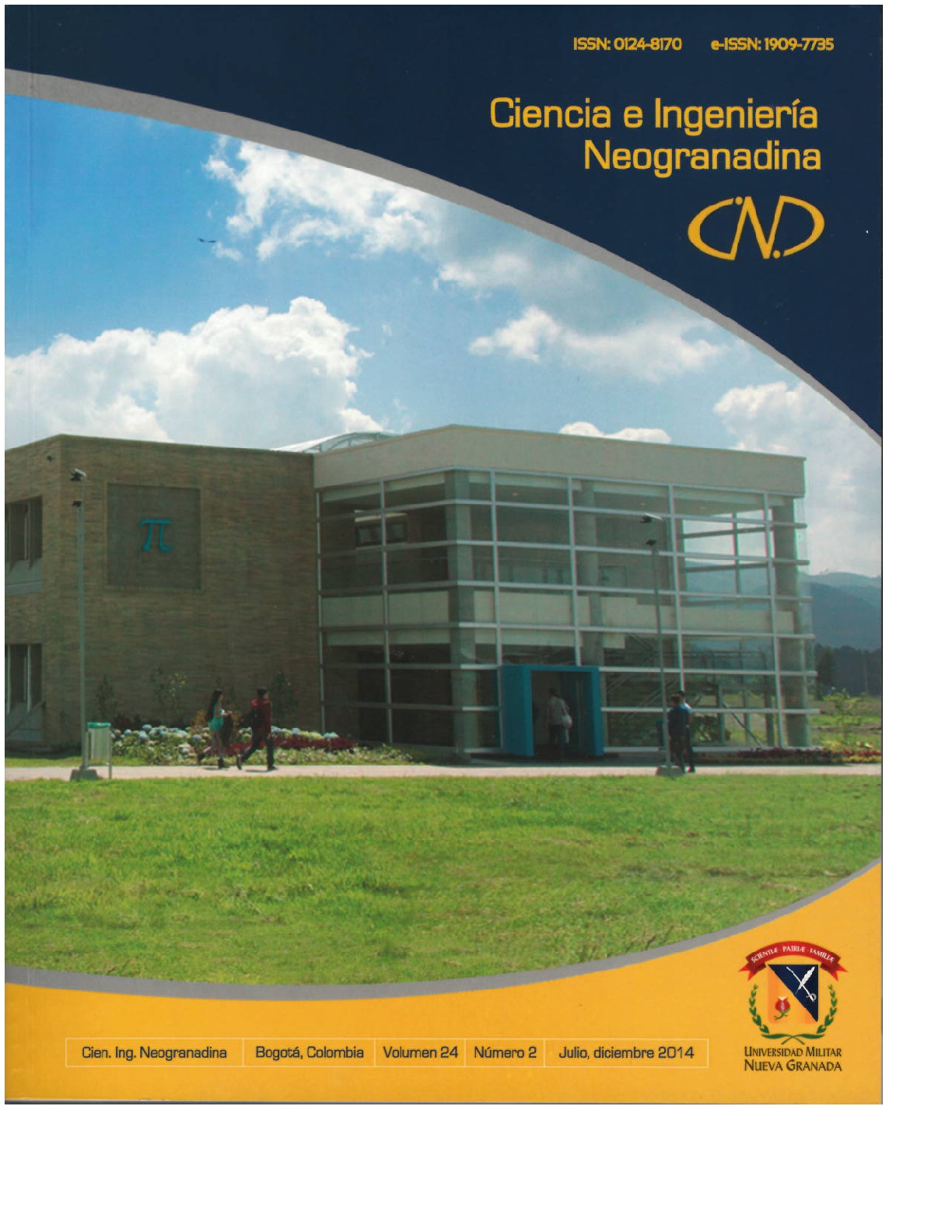Using the methodology BRIM (Bridge Information Modeling) as a tool for planning the construction of a concrete bridge in Colombia
Abstract
This paper shows the experience of using innovative methodologies for planning the construction of a concrete bridge in Colombia. The BrIM (Bridge information modeling) methodology was applied in order to improve the performance and planning development of the construction of this type of structure. The project development was divided into three stages: the construction of the conceptual model, the simulation of the construction process, and the quantification of materials and costs. The experience showed that the integrated models can become a valuable tool in the process of planning, designing and constructing different types of bridges. In order to use them, however, it is necessary to know the fundamentals of software use and have previous experience in modeling and representing the bridge components. In that case, the needs of the construction industry, such as improving quality, reducing costs, providing the tools for an adequate control of the construction, and reducing the design and production times could be met.Downloads
Languages:
esReferences
Caicedo, J.M. (2013). Las Obras Públicas: ¿Qué Falla?. Recuperado el 12 de marzo de 1014, de http://www.infraestructura.org.co/noticiasprincipales.php?np_id=330 .
Alarcon, L.F., Fuster, S., Mora, M. & Sossdorf, D. (2009). Utilización de imágenes y videos digitales para el mejoramiento de la productividad y prevención de riesgos en operaciones de construcción. Encuentro Latinoamericano de economía y Gestión de la Construcción, ELAGEC 2009. Bogotá, Colombia.
Fischer, M. & Tatum, C.B. (1997). Characteristics of Design-Relevant Constructability Knowledge. Journal of Construction Engineering and Management, 123(3). http://dx.doi.org/10.1061/(ASCE)0733-9364(1997)123:3(253)
Eastman, C.M., Teicholz, P., Sacks, R. & Liston, K. (2011). BIM Handbook Introduction. En BIM Handbook: A Guide to Building Information Modeling for Owners, Managers, Designers, Engineers, and Contractors. Hoboken, NJ, EE.UU.: John Wiley & Sons, Inc. doi: 10.1002/9780470261309.ch
Casta-eda, C. (2009). Plan para integración del "Building Information Modeling" (BIM) con herramientas de estimación de costos y programación de obra. Encuentro Latinoamericano de Economía y Gestión de la Construcción, ELAGEC 2009. Bogotá, Colombia.
Mc Graw Hill Construction. (2009). The Business Value of BIM: Getting to the Bottom Line. Recuperado el 17 de junio de 2014, de http://www.bim.construction.com/research/
World Economic Forum. (2013). Global Competitiveness Report_2013-14. Recuperado el 17 de junio de 2014, de http://www3.weforum.org/docs/WEF_GlobalCompetitivenessReport_2013-14.pdf.
Shin, H.M., Lee, H.M, Oh, S.J & Chen, J.H. (2011). Analysis and Design of Reinforced Concrete Bridge Column Based on BIM. Procedia Engineering, 14. http://dx.doi.org/10.1016/j.proeng.2011.07.271
Shim, C.S., Yun, N.R. & Song, H.H. (2011). Application of 3D Bridge Information Modeling to Design and Construction of Bridges. Procedia Engineering, 14. http://dx.doi.org/10.1016/j.proeng.2011.07.010
Halfawy, F.C., Hadipriono, F.C, Duane, J. & Larew, R. (2005). Development of Model Based Systems for Integrated Design of Highway Bridges. Institute for Research in Construction. International Conference on Civil, Structural and Environmental Engineering Computing, Roma, Italia.
Kivimaki, T. (2010). Bridge Information Modelling (BrIM) and Model Utilization at Worksites in Finland. 27th International Symposium on Automation and Robotics in Construction (ISARC 2010)
Heikkila, M.J. (2005). On The Economy And Benefits Of 3-D Design Method In Bridge Engineering. 22th International Symposium on Automation and Robotics in Construction (ISARC 2005).
Marzouk, M. & Hisham, M. (2012). Applications of Building Information Modeling in Cost Estimation of Infrastructure Bridges. International Journal of 3-D Information Modeling, 1(2). http://dx.doi.org/10.4018/ij3dim.2012040102
Azhar, S. (2011). Building Information Modeling (BIM): Trends, Benefits, Risks, and Challenges for the AEC Industry. Leadership and Management in Engineering, 11(3). http://dx.doi.org/10.1061/(ASCE)LM.1943-5630.0000127
| Article metrics | |
|---|---|
| Abstract views | |
| Galley vies | |
| PDF Views | |
| HTML views | |
| Other views | |












